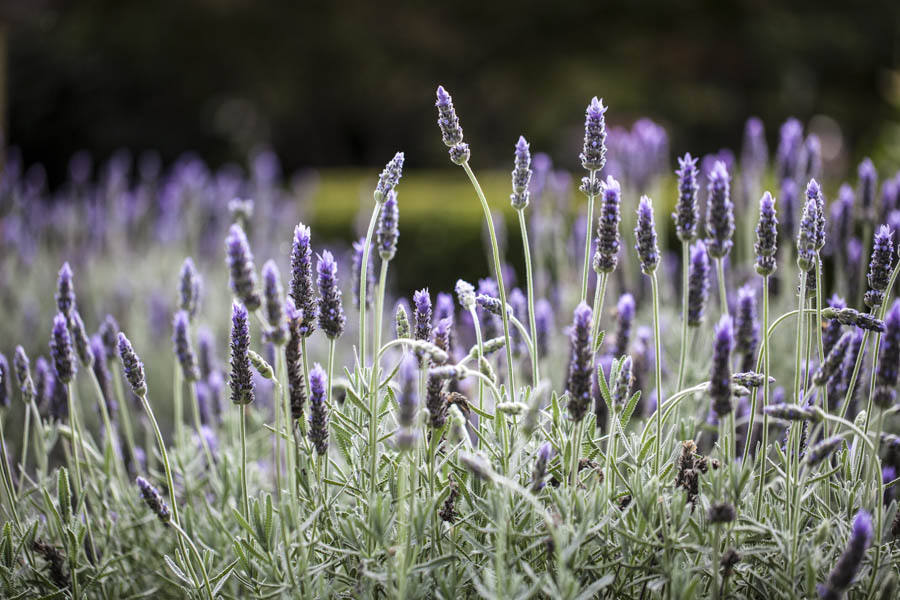3 Tips for Maintaining Lavender

Pinching and Pruning. In general, lavenders need frequent, somewhat aggressive pruning, pinching back, and harvest to maintain an attractive, compact form and avoid becoming leggy. Prune more aggressively after blooming from spring to fall for general cleanup and removal of spent blooms. Lavenders bloom on the current season’s growth. Use caution when pruning or pinching back before lavenders have bloomed, especially in spring and late summer or early fall; for some varieties you may inadvertently reduce or eliminate blooming by pinching back or pruning too aggressively.
Pests. Lavender has few pest problems. Most pest infestations of lavender are temporary and usually do not severely affect the health of plants. Infestations of aphids, spittle bugs, or white flies may show up over summer, especially in later summer after plants have been stressed by a few weeks of prior heat. As a first line of defense, try removing pest infestations with a strong stream of water from a hose before considering more extreme or toxic methods of control.
Amendments. While it is generally best to minimize fertilization of lavender, you may successfully encourage a new round of blooms in fall in many lavender species by surface dressing lavender plants during late summer or early fall with a small amount of composted manure, compost, and mulch, then watering thoroughly, being careful as always to avoid wetting, soaking, or mulching around lavender main stems.
Established lavender plants are often relatively maintenance free in many areas of California.
For complete information about growing lavender in your area, go to GardenZeus and enter your zip code, then go to lavender.
Other articles regarding lavender:
Quick Tip: How to Make a Lavender Bathing Infusion
